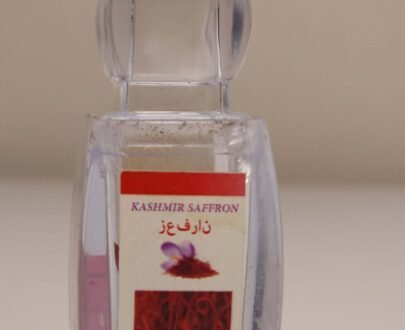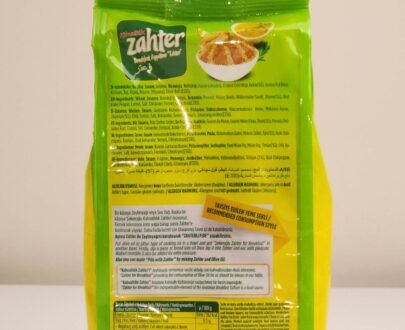Organic Natural Mung Beans
What is Mung Bean? What are the benefits?
According to a 2014 (BMC/BioMed Central) reviewTrusted Source, evidence suggests that mung beans may have several potential health benefits, including:
- Antioxidant effects. Research shows that several compounds in mung beans demonstrate antioxidant activity.
- Antifungal and antimicrobial activity. These include some against the Helicobacter pylori bacteria that causes stomach ulcers.
- Anti-inflammatory activity. Test tube studies suggest that mung bean extracts may have potential to improve symptoms of inflammatory conditions, such as allergies.
- Diabetes. Studies in rats suggest mung bean extracts may help lower blood glucose levels.
- Hypertension. Studies in rats suggest sprout extracts may help lower blood pressure.
- Cancer. Test tube studies suggest that compounds in mung beans may have antitumor properties.
Consult your herbalist before use.
Mung beans are a type of bean that has started to be consumed more in recent years by people who are conscious of healthy nutrition. Mung beans, which are widely grown and consumed especially in South Asia, are one of the foods that attract attention with their high fiber and mineral content. Mung beans, which are especially rich in B6 and folate, were produced in South Asia even in the B.C. times due to their high nutritional value. What is mung bean, the number of which has increased in our country in recent years? What are the benefits? What are the nutritional values of this special type of bean, called “Vigna radiata” in Indian and “mung” in Persian? We took care to answer all the questions for you.
Mung bean is a type of bean grown in our country, especially in regions close to Iran. This special type of bean, which has become more popular today, grows in the Mediterranean climate. Mung bean, which attracts attention with its mineral value and especially the fiber it contains, is an extremely popular grain, especially in Gaziantep and the foothills of the Taurus Mountains, and mung bean soup is one of the indispensable dishes on the tables in nearby places. In addition to all this, mung beans were a well-known food in our country a long time ago. Mung beans were also known as “gin black-eyed peas” in our country until 50 years ago.
What is Mung Bean?
Mung beans are widely grown in Iran. On the other hand, “India” stands out as the homeland of this special pulse, which attracts attention with its content. Mung beans, which date back to BC, are grown in geographies with similar climates, in addition to Iran and India. South American countries are known as the largest mung bean producers after India and Iran.
Mung beans, also known as mung beans, have the ability to keep you full for a long time because they contain high fiber. However, one of the most striking and distinguishing aspects of this special bean is that it does not cause gas. Mung beans also attract attention with their rich mineral and antioxidant content.
Mung beans are known for their high fiber, iron, protein, magnesium, potassium, manganese and phosphorus content. Mung beans have anti-aging properties. It contains high amounts of protein and fiber in its structure, does not contain gluten and does not cause bloating after consumption. Beans are rich in antioxidants. It is low in calories and low in fat. For this reason, it is often consumed by people who are on a diet. It is also known for its low sodium content. Mung Beans also have the feature of regulating cholesterol.
Benefits of Mung Beans
What are the benefits of mung beans?
The benefits of mung beans are extremely high compared to other types of legumes in the same class. For this reason, it is often repeated by health experts that people with various problems should consume this bean regularly. There are 7 grams of protein in 100 grams of mung beans. It is a legume that is very rich in protein. For this reason, it is often repeated that it should be consumed especially by people who do not consume meat.
Before giving information about the benefits and ingredients of mung beans, let’s talk about the ingredients of this special bean in detail. Mung beans are a product very rich in vitamins and minerals. 1 cup of mung beans contains 14 mg of vitamin C. In addition, a cup of mung beans meets 12% of men’s daily iron needs. For women, it meets 5% of the daily iron requirement. It meets 16% of folate requirements.
Mung beans are a food rich in fiber. Therefore, it has the feature of lowering cholesterol. Its fiber content helps maintain people’s blood sugar levels. In addition, it can also be consumed by diabetic people as it helps keep blood sugar balanced due to its fiber content and low glycemic index. Beans are rich in protein and zinc. Insufficiency of these minerals in the body causes weakness in hair and nails. It is possible to get these nutrients by consuming mung beans.
Mung beans are also very beneficial for the intestines because they are rich in fiber. It helps the excretory system function properly and remove toxins from the body. Mung Beans are low in calories. In addition, it is a food rich in protein and fiber. It also has a low glycemic index. It does not contain fat and keeps people full for a long time. Due to these properties, it is frequently consumed by dieters. Since it is rich in lecithin, it prevents fatty liver. It ensures normal functioning of the liver. It is beneficial for heart health. Regular consumption of mung beans reduces the risk of heart diseases by 22%.
Mung beans also contain protease inhibitors. Protease inhibitors are known to prevent tumor formation. Therefore, it also reduces the risk of cancer. It especially prevents women from developing breast cancer. Due to the presence of phytoestrogen in its content, it prevents skin aging by synthesizing elastin and collagen. Now, without further ado, let’s take a closer look at the benefits of mung beans and talk about the benefits of these beans in detail;
High Source of Fiber and Protein
Mascara has the ability to keep you full thanks to its high fiber content. This feature makes it frequently consumed by people who want to get rid of excess weight. Diabetics and especially thousands of people who want to get rid of their excess weight consume mung beans today. This type of bean, rich in fibre, fiber and pulp, is among the legumes most consumed by those who want to lose weight.
The benefits of mung beans come from its rich content. Containing approximately one tenth of protein, beans are also rich in minerals. Potassium, iron, folate, which is abundant in eggs and fish, as well as collagen, are vitamins and minerals that can be examined under the heading of the benefits of mung beans.
Rich in Minerals and Anti-Aging Collagens
Mung beans are also rich in collagen, which is abundant in various foods such as red meat today. Collagen is one of the main elements that cause late aging of the skin. Today, dietitians recommend that people consume much higher amounts of collagen in order for their body functions to function properly and for a healthier aging. Collagen is abundant today, especially in offal. Apart from offal, collagen is also found in large amounts in mung beans. Collagens have the ability to delay aging, especially in the skin.
Gluten-Free, High Nutritional Value
Another of the most notable benefits of mung beans is their gluten-free content. This type of bean does not contain gluten and is therefore an extremely valuable nutritional source for those with gluten sensitivity and especially for celiac patients. Mung beans also appear as a valuable type of legume that stands out because it does not cause gas compared to similar types of beans and legumes.
Mung bean is one of the legume species that attracts attention with its beneficial content. In addition to all its features, the nutritional values listed below tell us a lot about the benefits of mung beans. As you can see from the values below, mung beans contain high amounts of protein, magnesium and folate. Beans are extremely low in fat and calories, but have an extremely high percentage of plant-based protein. On average in 100 grams of mung beans;
100 Calories
0.4 Gr. Oil
7.1 Gr. Protein
7.4 Gr. Fiber / Fiber
It is available. In addition, 100 Gr. Consuming mung beans meets 40% of your daily folate needs, 15% of your manganese needs, 12% of your magnesium needs, 11% of your Vitamin B1 needs, 10% of your phosphorus needs and 8% of your iron needs. In addition to all these, iron, zinc, copper, Vitamins B2, B3, B5, B6 are also abundant in mung beans.
What are the dishes made with mung beans?
Mung bean dishes are diverse. Dishes made with mung beans are extremely delicious. Mung Bean Salad is one of the most preferred dishes.
Ingredients required for mung bean salad: 1 cup mung beans, parsley, dill, mint, spring onion, onion, 1 small roasted or fresh red pepper, gherkin pickle, lemon, walnuts, pomegranate syrup, 1 tablespoon olive oil, thyme, black pepper, salt.
How to make mung bean bean paste: To make mung bean bean paste, mung beans must be soaked in warm water the night before. Place the drained beans in a pot, add water and boil for about 20 minutes. The water of the boiled and softened mung beans is drained. Other blarney ingredients are prepared in a separate bowl. Mix lemon juice, olive oil, grated walnuts and pomegranate syrup. Mung beans are added to the mixture after it has cooled. It can be served after resting.
Mung beans are a legume that is extremely beneficial for health. Therefore, it should be consumed regularly. Mung beans can be used in soups, pilaf, ravioli, salad, hummus and casseroles. Since these legumes boil slowly, they should be soaked in water the night before use.
Mung beans are a type of legume often used in soups and dishes. It has the feature of increasing blood circulation. In this way, it can maintain the body’s blood balance. In addition to having high nutritional value, it is extremely delicious. Mung beans can be used to make nutritious meals. Especially in winter months, soups made with these legumes help increase immunity.











Customer reviews
Reviews
There are no reviews yet.
Write a customer review